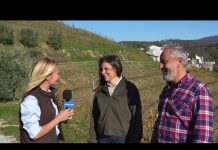by Maximiliano Crocamo
Interviews: Fabio Scoccimarro, FVG councilor for Environmental Protection, Energy, and Sustainable Development; Oriana Biasutto, marine transitional water quality manager
Environmental authorities in Friuli Venezia Giulia region have begun seasonal monitoring of coastal waters for the presence of Ostreopsis ovata, a microscopic alga known for producing potentially harmful toxins.
On July 21, officials from ARPA FVG, the regional environmental protection agency, conducted the second routine inspection of the 2025 bathing season. The initiative was carried out in the presence of Fabio Scoccimarro, Regional Councillor for Environmental Protection, Energy, and Sustainable Development.
Ostreopsis ovata is a benthic, single-celled algae species that thrives under specific environmental conditions, including extended periods of high air temperatures and intense solar radiation. Under such circumstances, the organism can multiply rapidly, leading to what scientists refer to as “microalgal blooms.”
Though naturally occurring, blooms of Ostreopsis ovata have drawn attention due to their capacity to release bioactive compounds that may pose health risks to humans and marine life. For this reason, monitoring efforts are conducted under nationally coordinated surveillance programs to ensure public safety and environmental protection.
The sampling and analysis of local waters are part of a broader strategy to track the impact of climate-related changes on marine ecosystems. Authorities encourage beachgoers and coastal communities to stay informed through official updates during the bathing season.





























